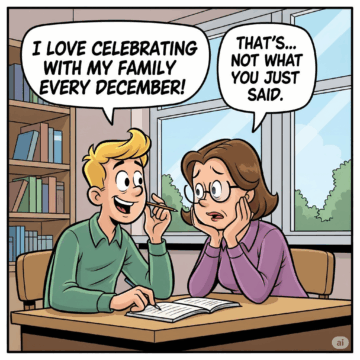by Scott Samuelson

One of my big regrets in life, the kind that tortures me at three in the morning, may not seem like a big deal when you first hear about it: I once said that I hated the Beach Boys.
In the wake of Brian Wilson’s death, I want to apologize for that vicious lie—though I’m afraid that my apology comes decades too late to the one person I really wish I could give it to.
The Beach Boys made the music that I first fell in love with. When I was a kid in the early 1980s, my family had only a handful of records and tapes. We rarely listened to music unless it happened to come from the TV. I wanted to try out a new pair of headphones and plugged them into the boombox that my mom and sisters used for their Jane Fonda workout. Because the Beach Boys compilation Endless Summer was lying around, it was what I stuck into the tape deck.
A few drumbeats—suddenly the glorious ahh-ahh-ahh-ahhs of “Don’t Worry, Baby”! Enchanted voices and swirling instruments appeared out of nowhere. It was the first time in my life that my mind was blown by music. Brian Wilson had unlocked the door where my soul was. Was I supposed to worry or not? I had no idea, but I was thrilled whenever the chorus cycled around. Immersed in the headphones, I rewound the tune and listened to it over and over.
“Little Deuce Coupe,” “Help Me, Rhonda,” “California Girls”—I came to adore every song on the album. “In My Room” was about just what I was feeling when I was listening to “In My Room.”
At the same time that I was falling in love with the Beach Boys, I started hanging out with a fourth-grade classmate of mine named Pammy. We’d spend all recess talking atop the monkey bars. The other kids began to taunt us about K-I-S-S-I-N-G. We were just nine years old. I had no idea what a romantic relationship would involve beyond chatting all recess. But our classmates weren’t wrong. She entered into that room inside me that the music of Brian Wilson had opened.
One day I peered into her eyes and said, “Have you ever heard any songs by the Beach Boys?” Little dimples formed in her cheeks, “I love the Beach Boys! My favorite album is Endless Summer!” She told me I should also check out the song “Good Vibrations,” which to me was an insider tip about a deep cut. I was in heaven. Read more »







 Watching Israel and Iran lob bombs at each other these last few weeks makes me tired. Just when the world seemed completely destabilized and clinically looney, two countries who both trace their religions back to Abraham or Ibrahim decide to make things worse. I know you’re supposed to reach for the most recent issue of Foreign Affairs or parse treaties on nuclear non-proliferation to make sense of this missile orgy, but this latest war might make you reach for your earplugs and blindfold instead.
Watching Israel and Iran lob bombs at each other these last few weeks makes me tired. Just when the world seemed completely destabilized and clinically looney, two countries who both trace their religions back to Abraham or Ibrahim decide to make things worse. I know you’re supposed to reach for the most recent issue of Foreign Affairs or parse treaties on nuclear non-proliferation to make sense of this missile orgy, but this latest war might make you reach for your earplugs and blindfold instead.



 Sughra Raza. The Visitor. Mexico, March 2025.
Sughra Raza. The Visitor. Mexico, March 2025.




 At a Christmas market in Germany, I told my German girlfriend’s mother that I masturbate with my family every December.
At a Christmas market in Germany, I told my German girlfriend’s mother that I masturbate with my family every December. The File on H is a novel written in 1981 by the Albanian author Ismail Kadare. When a reader finishes the Vintage Classics edition, they turn the page to find a “Translator’s Note” mentioning a five-minute meeting between Kadare and Albert Lord, the researcher and scholar responsible, along with Milman Parry, for settling “The Homeric Question” and proving that The Iliad and The Odyssey are oral poems rather than textual creations. As The File on H retells a fictionalized version of Parry and Lord’s trips to the Balkans to record oral poets in the 1930’s, this meeting from 1979 is characterized as the genesis of the novel, the spark of inspiration that led Kadare to reimagine their journey, replacing primarily Serbo-Croatian singing poets in Yugoslavia with Albanian bards in the mountains of Albania.
The File on H is a novel written in 1981 by the Albanian author Ismail Kadare. When a reader finishes the Vintage Classics edition, they turn the page to find a “Translator’s Note” mentioning a five-minute meeting between Kadare and Albert Lord, the researcher and scholar responsible, along with Milman Parry, for settling “The Homeric Question” and proving that The Iliad and The Odyssey are oral poems rather than textual creations. As The File on H retells a fictionalized version of Parry and Lord’s trips to the Balkans to record oral poets in the 1930’s, this meeting from 1979 is characterized as the genesis of the novel, the spark of inspiration that led Kadare to reimagine their journey, replacing primarily Serbo-Croatian singing poets in Yugoslavia with Albanian bards in the mountains of Albania.